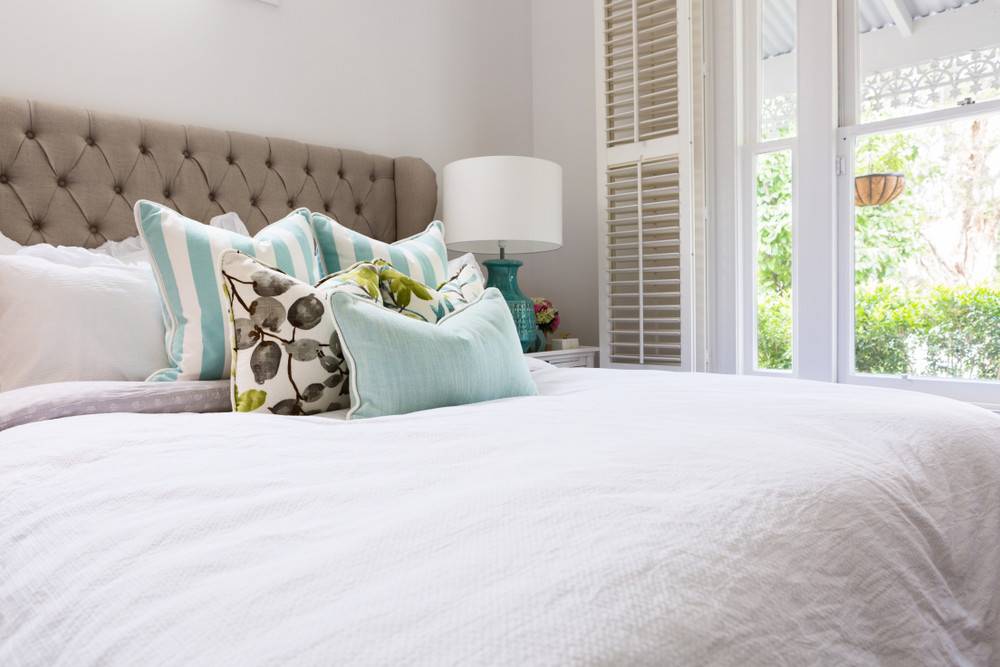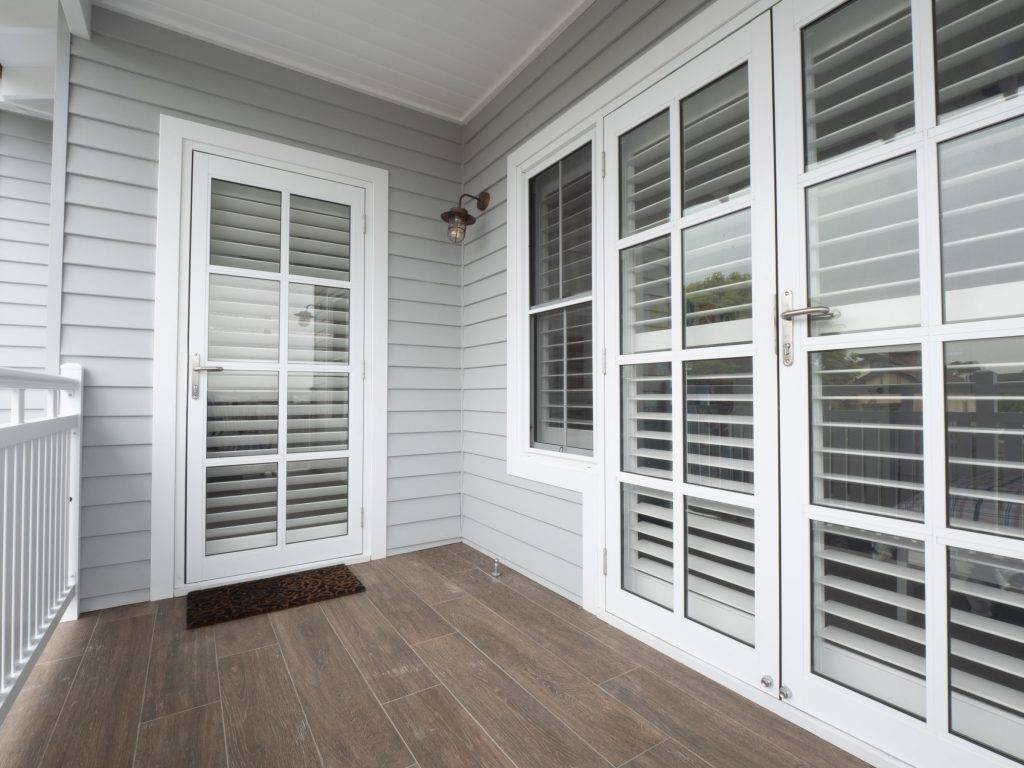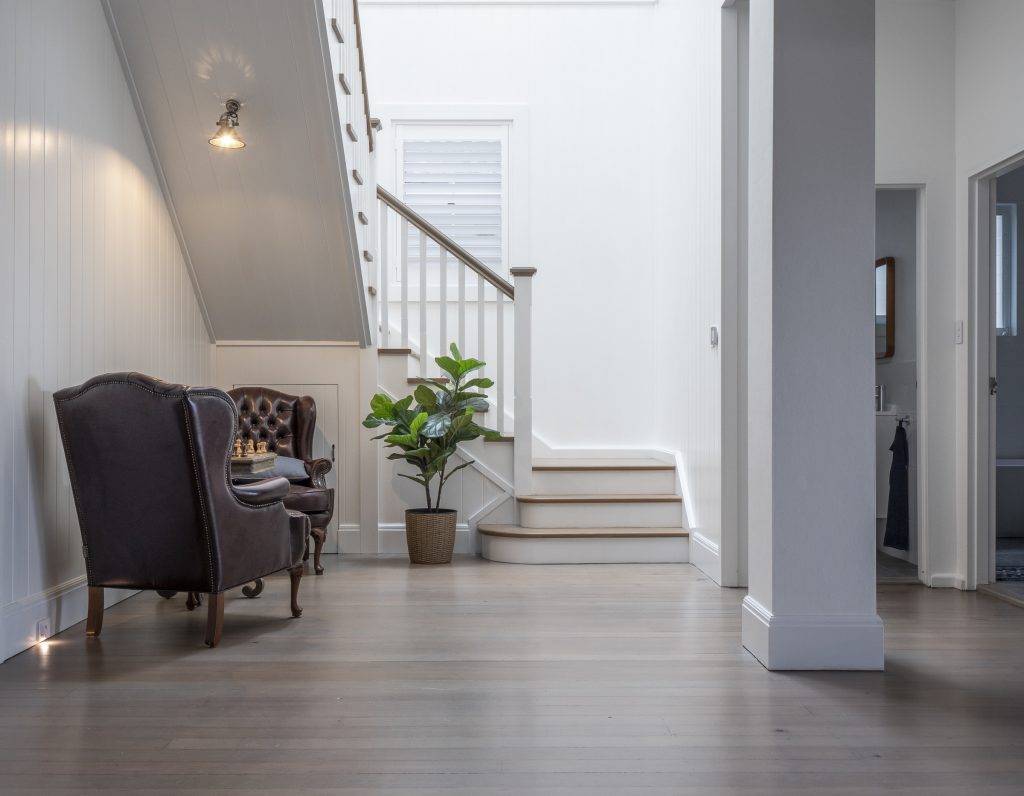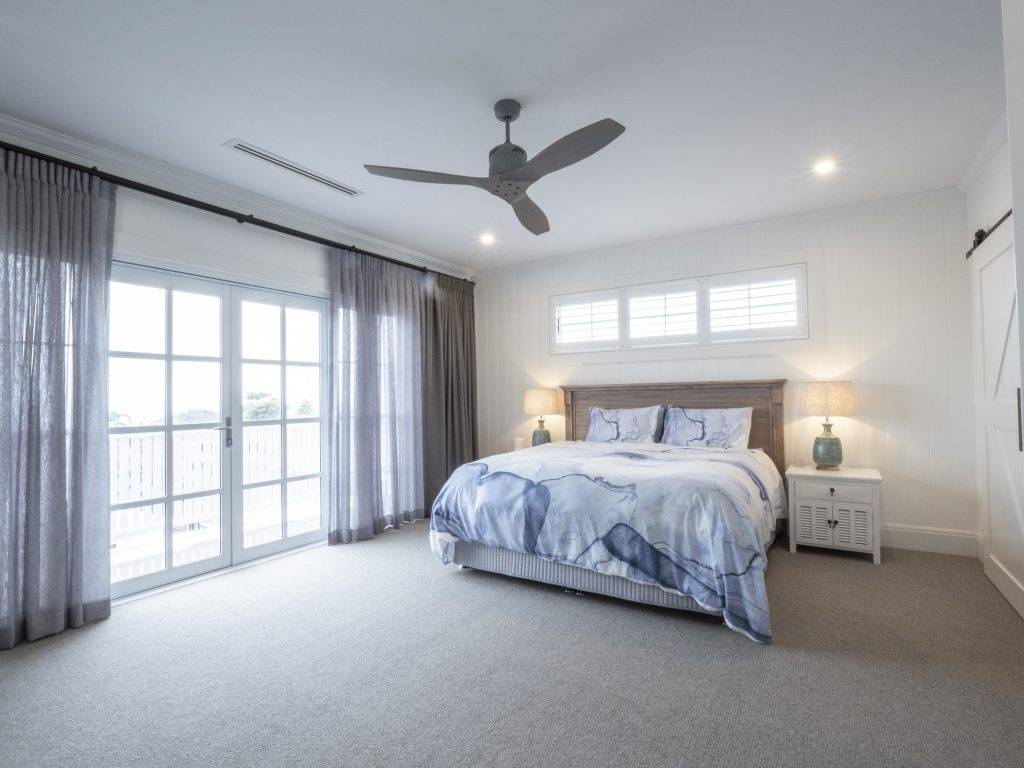What type of loans can you use to fund your addition or extension?
If you are building an addition or extension on your home you may find yourself needing to arrange finance to pay for the build. We can help you secure the appropriate finance for your build.
Refinance your current mortgage

To pay for your addition or extension you can opt to refinance your existing mortgage. This means that you will use the equity in your home to obtain a loan for a higher amount than what you currently owe to finance your addition or extension project.
The new loan will replace your old loan and you can choose to stay with your existing finance provider or move to a new finance provider. Refinancing has several advantages for homeowners with substantial equity in their homes.
First, it may allow you to obtain lower interest rates without changing your monthly mortgage payment or adding on a new payment.
Second, some lenders “may approve a loan based on the estimated value of your home once the addition is completed,” which is convenient for projects that require a large amount of money, such as a second story addition or ground floor extension.
Take out a Construction Loan
A construction home loan is a type of home loan designed for people who are building a new home, a first floor addition, ground floor extension or doing large scale renovations. It has a different loan structure to home loans designed for people buying an established or existing home.
A construction loan most commonly has a progressive drawdown. That is, you receive instalments of the loan amount at various stages of construction, rather than receiving it all at once at the start. You generally only pay interest on the amount that is drawn down, as opposed to on the whole loan amount.
A number of lenders offer construction loans that are interest-only during the construction period and then revert to a standard principal and interest loan.
Of course, a construction loan is just one potential source of funding for your project. The Federal Government recently unveiled its HomeBuilder scheme, which will give eligible homebuyers and existing owners grants of $25,000 to help them construct or substantially renovate their home. Strict eligibility criteria apply– for example, you’ll need to meet an income test, and be building a new home that’s worth less than $750,000 or a renovation that will cost at least $150,000. For more information visit our blog post here.
We can connect you with our finance specialist to discuss how to get started today.
Live the life of Luxury with a Resort Styled Retreat
The Perfect Parents or Teenagers Retreat
Looking for a dedicated area for you to escape the daily grind and kick back and relax? Our Resort Style Retreat Package is tailored to providing the extra space and lifestyle you are looking for.
Retreat Package
40m2 Second Storey Addition
1 open plan bedroom with integrated living area
1 large ensuite
This exclusive package is available for a limited time only. Take advantage of low-interest rates, increase the value of your home and get that extra room for your family.
Terms and Conditions:
Build cost only, based on a 40m2 addition. Plans and Council approval excluded – these are estimated at $15K.
A full quotation can be only be provided following an onsite consultation with the builder to undertake an assessment and determine suitability.
Family Value Package
Build a second storey addition today!
We have the perfect Family Value Package for you. Get the extra room and lifestyle you and your family have been looking for. This second storey addition package is packed with value and designer inclusions with plenty of additional room for you and your growing family.
| FAMILY VALUE PACKAGE | UPGRADE TO OUR Premium Family Value Package |
| 70m2 Second Storey Addition 3 bedrooms with BIR’s 1 bathroom 1 living area |
80m2 Second Storey Addition 1 master bedroom with ensuite & WIR 2 bedrooms with BIR’s 1 bathroom 1 living area |
This exclusive package is available for a limited time only.
Maximise the value of your home by investing in the extra room for your family today.
Terms and Conditions: Build cost only, based on a 70m2 or 80m2 addition. Plans and Council approval excluded – these are estimated at $15K.
A full quotation can be only be provided following an onsite consultation with the builder to undertake an assessment and determine suitability.
That’s a wrap for 2019
Our team has officially wrapped up things for 2019! Here is an overview of our year!
Our office is now closed until 14th January 2020.
We wish everyone a safe and Merry Christmas and a Happy New Year!
You can still contact us on our website during the break and we will be in touch when we return. For any enquiries please fill out the form below.
Nailstrip Cladding
Some of our team were over at Belimbla Park recently installing the nailstrip metal wall cladding on stage 1 of the parapet of the ground floor extension.
Here are several benefits of using this material for your wall cladding:
– It’s quick and simple to install, with no clips or special seam tools required
– It achieves an architectural facade with no visible fixings and has a modern clean style compared to traditional cladding
– You can get custom widths for your individual design style
AND our favourite;
– It requires minimal maintenance compared to other cladding materials, such as rendered brick and timber!
This look is definitely the new trend that we are seeing coming in across our builds, with our client in Rozelle also opting for this cladding! Want to know how to incorporate it into in your build either as a feature or across your home? – just ask us!
Connecting Families
Second storey additions, parents retreats, ground floor extensions, large scale renovations, granny flats, knockdown rebuilds – this is what we do and we LOVE it!
Did you know that a part of our job is also specialising in connecting families by creating additional, practical well thought out living spaces for families that are growing, those that are looking to move back in and those that require looking after.
Often we are contacted about creating more space for growing families, a great option to consider in this case is a parents retreat, teenagers retreat and retirees retreat through the addition of a second storey.
Parents Retreat: A parents retreat is the addition of a master bedroom, ensuite and walk-in wardrobe. The aim is to create a luxurious space where relaxation and privacy are the priority.
Teenagers Retreat: A teenagers retreat creates a space with additional bedrooms, a bathroom and living space creating a sanctuary away from the parents.
Retirees Retreat: A retirees retreat creates a space tailored to the more mature audience, they often include the addition of a bedroom, ensuite, wardrobe and a living area with a wet bar. They can be fitted out with features that can assist with ease of accessibility including wider entryways, stairlifts, a lift, even floors throughout and even a wet bar to maintain their independence.
If you are planning a build, talk to our team. We want to be a part of your building journey and make it a stressfree and enjoyable build, so much so that at the end of it, you will say to us that you would do it all again!
How Colonial Interior Styling Can Bring Your Home To Life
How Colonial Interior Styling Can Bring Your Home To Life
Every country has a colonisation era worth remembering, which also merged the art and design influences of various cultures. In the United States, Colonial decorating style reflects the era that started with the arrival of Christopher Columbus and ended around 1763 before the Revolutionary Period. Furniture style is simple, sturdy, and unique, as practiced by the famous Colonial furniture designers Chippendale and Hepplewhite.
The characteristics of colonial interior styling can bring your home back to life in so many ways. Learn more by reading below.
Revive Your Home With the Hamptons Style
It’s rejuvenating to bring Hamptons Style into your home, giving a new direction to the look and feel of your living space. From the traditional white and blue color palette as inspired by the sea, other colors can make your living room far richer. For example, you can use chocolate brown tones, warm gold, lavender tones, teal shades, and creamy beige.
Gone are the days when this style is best carried out with bold blues against white. Embrace a more contemporary Hamptons Style by striking a perfect balance of yin and yang and using contrasting colors while achieving a serene and calm ambiance. Achieve the Hamptons interior style by checking our expert tips for Colonial styling.
Here are some tips and tricks to implement the Hamptons Style to bring your home to life:
- Play with Textures: Introduce rough materials, such as warm metals and aged brass for great tactile quality. You can combine it with your soft furnishings for more layered aesthetics.
- Strike a Perfect Balance of Materials: You can always work with marble, wood, and other materials with the Hamptons style. Think about attaining a good balance between light and dark, soft and hard, and smooth and rough. Incorporate geometric panels, glass tables, and marble benchtop.
- Try New Patterns: New patterns are very interesting. By working with geometric designs or shapes, you can give a space a more masculine, formal, and structured vibe. Try using geometric shapes in the bathroom, and it will surely make your home more lively. Invest in geo-shaped rug patterns to create an interesting focal point in your living room.
- Balance the Design Elements: When you already have geometric patterns, you can lighten them with softer prints, like florals or block colors. Art deco patterns can be seen on cushion covers, which look sublime.

Decorate Your Home Following the British Colonial Style
In the late 1800s, the British Colonial interior decorating style was created. This period started when British people went to live in Asia, Africa, India, and the Caribbean, adapting refined British interior design to the available materials and climate where they moved.
The architecture of a British colonial style home has high ceilings. It allows the heat to rise and keep the rooms and a bit cooler for a more energy-saving home. The ceilings and floors were made of wood with oversized ceiling fans. Also, light is allowed to enter with large windows, giving your home more space to breathe for a livelier look.
Here are some tips and tricks to add British Colonial interior style to your home:
- Add dark mahogany furniture for a more formal look. If you want a casual look, choose bamboo, rattan, or wicker furniture materials.
- Choose pillowcases and curtains made of cotton or linen with animal or botanical prints as accents.
- Don’t forget to place oriental rugs to depict the British colonial style best.
- For artwork, go for those with a botanical theme because British families were very interested in studying botany at that time.
- Hang ornate mirrors with the finest details on the wall.
- For accessories, display beautiful crystal, silver items, fine china, Asian white and blue porcelain, animal horns, pineapple symbols, tortoise shells, seashells, maps, telescopes, and hurricane lamps. Avoid palm tree and monkey prints.
Patronise the American Colonial Interior Styling
When it comes to American Colonial interiors, the rooms are spacious and light with soft, muted colors and clean lines. Also, you’ll notice wide baseboards, white ivory ceilings, and intricately-designed crown moldings. Wood plays a crucial role in an American Colonial style’s design elements.
Here are some tips and tricks to design your home with the American Colonial interior styling:
- The floors are typically made of mahogany, cherry, or walnut wood.
- Handmade wooden furniture is preferred. Pine, maple, or birch furniture pieces have simple designs.
- Light fixtures include cast-iron lamps and ornate chandeliers.
Conclusion
With the many decorating styles to choose from, Colonial style will never fade. The most appreciated furniture pieces came from the Colonial era when different countries or races merged and shared design ideas. Strength, durability, and passion in the construction of Colonial furniture pieces is evident. Indeed, the Colonial interior style can bring your home back to life, reminiscing and learning from the stories of the past.
Save yourself over $100,000 by building an addition vs. buying a new property
Often a difficult choice for families looking to increase their living space is whether to purchase a new home or build an addition on their current home. The costs associated with both decisions can vary but there are many hidden and overlooked costs related to purchasing a home which are not applicable when building an addition. We have outlined costs below for you to keep in mind if this is a decision that you are currently looking to make;
Costs related to purchasing a home
Loan fees – This is the fee charged by a bank or other lending institution when you apply for or take out a loan. Approximate cost: $Nil – $800 There may be additional costs preparing and registering a mortgage.
Mortgage discharge fee – If you have a mortgage, you can expect to close your mortgage loan for approximately $1,000, but this cost can vary depending on your bank. This is essentially a fee for the paperwork involved. Approximate cost: $1,000-$2,500
Conveyancing fee – A conveyancer is required for the process of transferring the property from the seller to the buyer. Approximate cost: $700-$2,500
Disbursements – Your solicitor/conveyancer will charge for some of these expenses paid on your behalf during the conveyancing process. Approximate cost: $100-$350
Stamp duty – You must pay contract stamp duty on the purchase price of the property. Approximate cost based on a house valued at $1.1 million: $45,990
Inspection fees -Building Inspection – A building inspection checks structural soundness and lists any visible defects and necessary repairs. Approximate cost: $300-$700 & Pest Inspection – A pest inspection checks for any signs of past or present pest infestation. Approximate cost: $250 – $300
Real estate agent commission – The cost of selling will depend on the amount of commission charged by your real estate agent. The national average commission rate in Australia sits at around 2 per cent, but commission rates vary from agent to agent. Approximate cost based on a house valued at $1.1 million: $22,000
Auctioneer fees – If you’re holding an auction, you’ll often have to pay an auctioneer’s fee. Approximate cost: $6,000
Moving costs – The cost of moving generally depends on the distance you’re travelling, the amount of furniture you’re moving and whether you’ll hire a full-service removalist or pack the truck yourself. You’ll also need to purchase storage boxes if you haven’t got them already. Approximate cost: $400 – $3,000
Property repairs and renovations –When buying a new home spending money on repairs and renovations is very common. Common repairs include painting, flooring, lighting repairs, kitchen repairs and maintenance, bathroom repairs, electrical repairs as well as giving the exterior a touch up to give your new home that personal touch. Approximate cost: $1,500 – $20,000
| Costs associated with moving: | |
| Loan Fees | $Nil-$800 |
| Mortgage Discharge | $1,000-$2,500 |
| Stamp Duty Based on a home valued at $1.1 million | $45,990 |
| Inspection Fees | $300-$1,100 |
| Real Estate Commission Based on a home valued at $1.1 million at 2% Commission | $22,000 |
| Auctioner Fees | $6,000 |
| Moving Costs | $400 – $3,000 |
| Property Repairs and Renovations | $20,000 |
| Total Costs Estimate | $103,890 |
Additional inconveniences and disruptions related to purchasing a home:
- Relocation of services – When moving you will need to relocate your existing services to your new property. This can include transferring and updating your: Gas, Electricity, TV, Internet/Phone, Insurances, Licenses and addresses for your bills.
- Disruptions in relocating – When moving to a new home you face the uncertainty of not knowing who you are moving next to. You have to consider that your new neighbours may not be as accommodating as your previous neighbours which you have good relationships with.
- Other things to consider are the need to change – Schools, churches, social groups, gyms, childcare and the commute to your workplace.
Benefits of building an addition
One of the benefits of building an addition is that you can custom design your plans to tie in with your existing home and remove the need to move or purchase a new home. Building an addition is the perfect way to add significant value to your existing home whilst bypassing any of the issues related to moving.
We specialise in building second storey additions that seamlessly integrate with the existing structure of your home, giving you an aesthetically pleasing street frontage which will make you the envy of all of your neighbours.
Costs related to building an addition
Plans and drafting – $6,000
Council lodgement – $5,000
Council fees – $2,500-$15,000
The average cost of adding a 3 bedroom, 1 bathroom and 1 living room addition to a home starts from $200,000.
If you are looking for an affordable solution and you are happy with your existing location, have a great relationship with your neighbours and would like to avoid the stresses of moving, then an addition is the perfect option for you to consider.
Give our team a call or complete our Pre-Quote Enquiry Form if you would like to discuss a potential addition to your home. We can conduct a pre-site assessment prior to the builder coming out to meet with you to ensure that building an addition is a viable option on your property for you.
Energy-Saving Tips for Your Home Lighting
With the price of crude oil forecasted to rise in the coming years, you can expect power rates to follow suit. Paying more for your electricity bill can wreak havoc on your tight household budget. Luckily, there are ways to help cushion the impact of higher living costs. You can implement measures to lessen power consumption, thereby saving money. One of these is to save energy on your home lighting.
Steps to more cost-effective home lighting
Do you know that about a quarter of your electricity bill comes from lighting? Minimising consumption doesn’t suggest you have to live in the dark. Lights do account for a significant portion of your power use, but thanks to technological advances and some practical steps that you can apply right away, it is possible to consume less power. Besides, conserving energy means you’re also doing your part in preserving the environment.
Here are some tips on greener and more economical living without compromising the illumination of your home;
-
- Always switch off the lights in rooms that are not being used or occupied. You may need some time to develop this habit if this isn’t your usual practice. If you think you won’t ever remember switching off the lights, consider installing timers or motion-sensor switches instead. These special-purpose devices will do the job automatically for you.
-
- Make use of low-wattage bulbs in areas that need to be illuminated for longer times, such as the porch or a dark hallway that need to be lit overnight. If you replace a 75-watt bulb with one that is rated at only 15 watts, energy usage is cut by as much as 80%.
-
- Mount task lights in spots where you do most of your productive work. These can be near the kitchen counter, crafts table, reading chair, bedroom dresser, or bathroom vanity. This way, you don’t have to turn on the high-output ceiling light when performing specific tasks.
-
- Your lighting needs vary throughout the day, depending on how bright or dark it is outside. Setting up dimmer controls in your home lighting system will allow you to adjust interior lighting in accordance with natural light fluctuations.
-
- If possible, have a one-to-one pairing between switches and bulbs, so you don’t turn on multiple lights with a single switch.
-
- Make sure that the fittings you pick allow maximum illumination. Some lighting accessories, especially those that feature coloured fabric or glass, can diminish light by as much as 50%.
-
- Sometimes, it’s just a matter of being diligent with household maintenance. Regularly cleaning glass windows and dusting off bulbs and their fixtures will allow more light rays to shine through.
- Shift to lighting that’s energy-efficient. Light fixtures that utilise energy efficiently have the same brightness as regular bulbs but have lower wattage; thus, they consume less power when switched on. So, the next time a light bulb in your house gets busted, consider replacing it with a low-energy alternative.
Compact fluorescent lamps (CFL) and light emitting diodes (LED) cost more than the conventional ones. However, CFLs and LEDs are worth investing in since they last much longer and utilise a mere 10% to 20% of the energy consumed by standard incandescent lights. Ultimately, you will recoup what you paid for via less frequent light replacements and savings on your electricity bill.
You can learn more about the advantages of energy-efficient lights here.
Exploit natural light so you can minimize the use of artificial lights during the daytime. Natural light is supplied free of charge, and you can use as much as you want. Here are some creative ways to make the most out of the natural light that enters your home:
-
- Incorporate more reflective surfaces in your décor like mirrors, metal fittings, glossy floor tiles, and chandeliers.
-
- Don’t position large furniture pieces beside windows. They will block or reflect the light back outside.
-
- Window treatments make a big difference. Instead of thick, dark-coloured curtains that block out the sun, drape your windows with fabrics in lighter hues. The curtains will allow light to enter while still maintaining enough privacy.
-
- Skylights are excellent options of brightening up a gloomy and dark space in your home. If the area is not directly under the rooftop, a solar tube is a suitable alternative. Solar tubes employ pipes with reflective surfaces to bring external light inside the house.
You don’t have to be nervous every time the power company delivers your monthly bill. With the above steps in place, you’ll be pleasantly surprised that you still have some extra cash left in your pocket after your household expenses have all been paid for.
Talk to us about upgrading your existing lights to LED downlights when building your addition.



